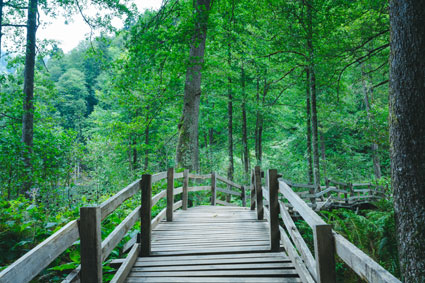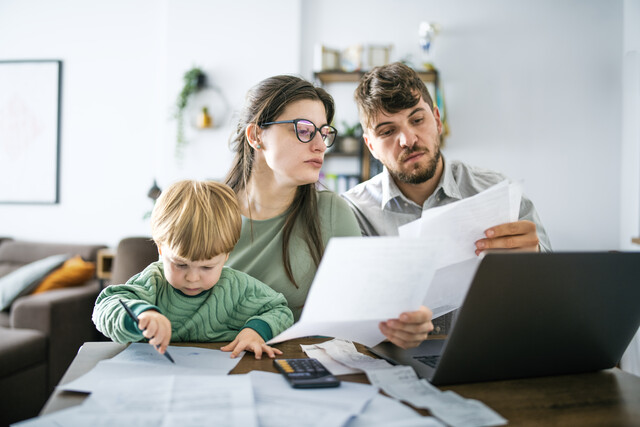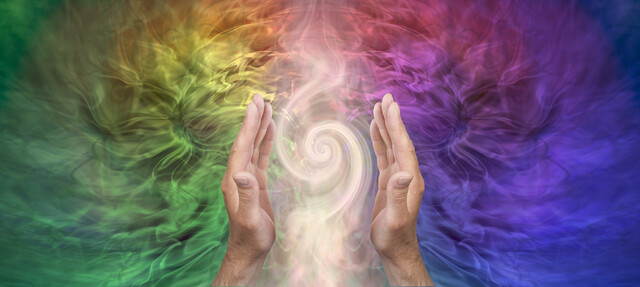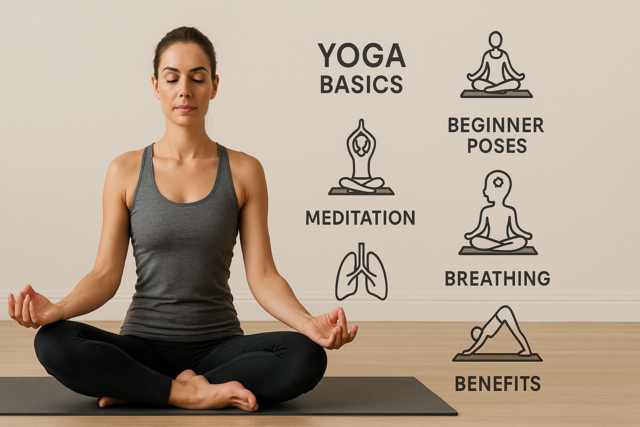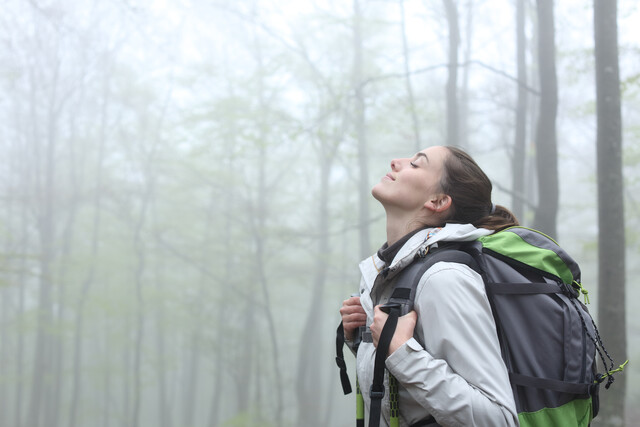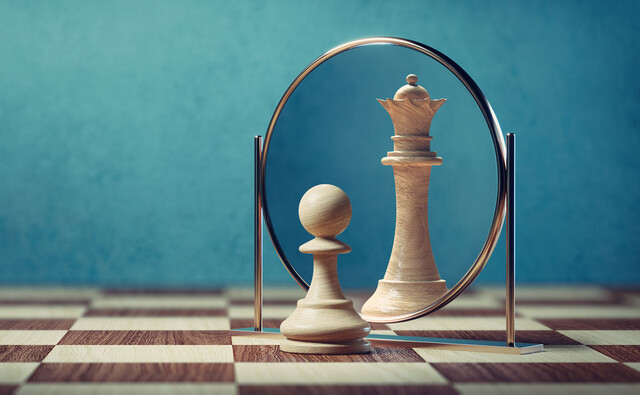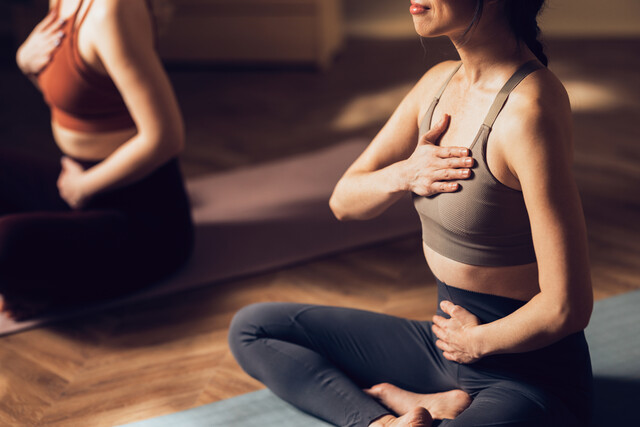Aromatherapy for Relaxation
-
Carrier Oils and Essential Oils
-
Relaxing Essential Oils
-
Ways to Use Essential Oils
-
Home and Office
-
Aromatherapy for Road Rage
One of the most common reasons people turn to aromatherapy is to help them to relax. While aromatherapy is a very powerful adjunct to your overall health in many other ways, learning to use aromatherapy essential oils to relax is a very easy and very pleasant experience. Our bodies respond very well to certain smells and fragrances because they bring back pleasant memories. With aromatherapy, you are not only choosing to smell something that is pleasant, essential oils work with your brain and your body on a cellular level to help soothe your feelings of stress and anxiety.
Carrier Oils and Essential Oils
Aromatherapy is the art of using essential oils, the essence or "life blood" of a plant, the most powerful healing component of various plants. When looking into aromatherapy, be sure you are using only essential oils, found at specialty shops or mail order. Synthetic fragrances will not work in the same healthful and beneficial way.
Essential oils are absorbed into our bodies and they interact directly with our body's chemistry and have a very direct impact on our brain bringing about changes in our moods and emotions.
For the purposes of this article we will only be discussing a small number of the many hundreds of essential oils that are available. This is a very good introduction to essential oil usage, and you may find that you would like to learn a great deal more to incorporate more about aromatherapy into your daily life, not only for relaxation and stress reduction, but also for healing of both body and mind.
Aromatherapy is an ancient form of intervention that is as effective today as it was thousands of years ago.
True essential oils are distilled from various parts of specific plants. In some plants the peel is used to extract oils, such as orange, lemon, and bergamot. Other plants have flowers that are steam-distilled to release their essential oils, like lavender. Still others have their most potent component in their leaves, like rosemary and tea-tree. Whenever possible choose food-grade essential oil.
The essential oils you choose should be stored in dark-colored glass containers with tight-fitting lids as their potency diminishes with exposure to sunlight.
Carrier oils are oils usually extracted from nuts or seeds like sweet almond or apricot kernel oil. A carrier oil is a vegetable oil used to dilute essential oils, as they are usually far too concentrated to use alone.
Essential Oils for Relaxation
Here is a list of seven essential oils you may wish to try for the purposes of relaxation and stress reduction.
-
Lavender � If you're only going to choose one essential oil, let lavender be it. It is the most calming of the essential oils for your nervous system; it alleviates stress, depression, tension, and helps you to relax. Lavender is also known for relieving stress and migraine headaches. Lavender promotes feelings of clarity and calm.
-
Bergamot � A member of the citrus family, bergamot has a lighter fragrance and is very healing for anxiety and tension. (All citrus essential oils can cause sun sensitivity, so be careful with sun exposure if using citrus essential oils directly on your skin as in a massage or in a bath.)
-
Peppermint � Peppermint is especially helpful for mental fatigue simultaneously calming the nerves. It is an oil that not only calms the nerves, but lifts your spirits.
-
Sandalwood � This essential oil is excellent for relaxing and is often used as a meditation aid. It soothes the mind, body, and spirit by reducing our stress response.
-
Clary Sage � This essential oil calms the nerves and reduces stress, because it is considered to be a very calming and uplifting essential oil.
-
Geranium � Sometimes used as an anti-depressant, this essential oil reduces tension and stress and is used in many blends to help lift the spirits. (Avoid if you are pregnant or thinking of getting pregnant.)
-
Ylang Ylang � this essential oil is particularly helpful for women who are experiencing stress and tension. It reduces anxiety, helps reduce feelings of helplessness and depression, and diminishes feelings of fear and panic.
Here are a few more essential oils you may find helpful if you wish to expand your selections:
-
Chamomile � Excellent for its calming effect
-
Lemon � Uplifting, bright, mood-elevating
-
Grapefruit � Great confidence-builder
-
Basil � Stimulating and helps to focus the mind
-
Rosemary � Helps prevent feelings of exhaustion
These will be used in a few blends later on in the article.
Ways to use Essential Oils
Aromatherapy can trigger a positive emotional and physical response because the oils work directly with your body to stimulate your body's limbic (emotional) and endocrine (hormonal) systems. Use your essential oils to reduce stress in one of three ways:
-
Inhalation Therapy
-
Baths
-
Massage Oils and Lotions
Inhalation Therapy - When you are suddenly faced with a stressful situation, inhaling an essential oil or essential oil blend is often the quickest way to reduce your stress and tension. This method means you either breath in the scent through steam, direct diffuser, or through an ambient inhalation system.
To breathe it in directly some people will take a small glass vial and fill it with salt. Then they will place a blend of up to 25 drops of essential oils into the salt, cap the vial, shake it vigorously, and then carry it with you. When you find yourself in a stressful situation, you can discretely open the vial and smell the essential oils for an immediate sense of relaxation and stress relief.
Another inhalation method is steam inhalation. Add three to six drops of your chosen essential oil, or essential oil blend to four to six ounces of boiling water. Place your nose about 10 inches above the steam and inhale the vapors for several minutes. This can be refreshed by adding more boiling water later in the day.
For ambient inhalation you can dispense essential oil through the use of a room diffuser. There are many different types available. Some use a small candle to heat essential oil in a dish above the flame to diffuse the oil into the room. Others use a tiny fan and a pad that is used to hold several drops of essential oil. This works especially well in an office setting.
Baths � Using essential oils in a bath serves a dual purpose. Not only are you inhaling the essential oils, you are also allowing them to move through your skin into your body where they will begin working on a molecular level.
You can add up to five drops of essential oil directly to your bath water, or you can prepare bath salts with essential oil for an added level of relaxation to your bathing experience. To � cup of a combination of epsom and sea salts, add up to five drops of your chosen essential oil and dissolve in the bath as the warm water is running. (Remember, if using any citrus oils, avoid sun exposure immediately after bathing.)
Soak in the tub for 20 to 30 minutes for maximum benefit.
Massage and Lotions - You can make your own massage oil by using two ounces of your chosen carrier oil (sweet almond or apricot kernel are good choices) and then ten drops of your chosen essential oil or oil blend. Massage this on yourself, or have someone else massage you.
You can also add several drops of your chosen essential oil to your skin care lotions and to your hand soap dispensers so that you enjoy the benefits of essential oils throughout the day.
Home and Office
In this section you will be introduced to some blends of essential oils that work particularly well for home and office use. Naturally, if you find that you prefer the fragrance of a single essential oil, you may certainly do so. It is interesting, however, to experience some essential oil blends, because the oils work synergistically with each other; or in other words, their properties become even more effective because they have been blended with another oil.
Essential Oils for Relaxation and Stress Reduction:
-
Bergamot 6 drops
-
Chamomile 3 drops
-
Geranium 1 drop
-
Lavender 6 drops
-
Lemon 3 drops
-
Sandalwood drop
This particular blend is especially effective at lower stress and tension levels.
Essential Oils for Confidence:
-
Grapefruit 10 drops
-
Basil 6 drops
-
Bergamot 5 drops
-
Lavender 3 drops
Aromatherapy for Road Rage
As with the home and office blends, you may be interested in using one of the two following essential oil blends for the stressful driving times you may experience. You don't need to be the aggressor to suffer from the effects of road rage. Use one of the two blends below to help calm yourself when you are in the car.
A very useful car diffuser can be used that plugs into the cigarette lighter or power point in your vehicle. The heat generated will diffuse the oil drops you place on a pad of the diffuser. Some people keep oils in their vehicle and use them every time they drive. They say that it is now one of the most relaxing parts of their day. Even better, people who ride along with them enjoy the fragrance and enjoy a more peaceful frame of mind as well.
Road Rage Blend 1 � This is the easiest blend to use as it requires only lavender and bergamot essential oils. Place 8 drops of lavender on the diffuser pad and 3 � 5 drops of bergamot on the same pad. This will effectively blend the two oils. Lavender and bergamot both work together to soothe your nerves, reduce your anxiety, and promote a sense of well-being.
Road Rage Blend 2 � This blend is one you might want to mix at home in a dispenser bottle and keep a bottle of this blend in your vehicle. The oils are to be blended in the following ratio:
-
Bergamot � 90 drops
-
Lavender � 45 drops
-
Orange or Lemon � 45 drops
-
Geranium � 10 drops
-
YlangYlang � 10 drops
Remember to keep this blend in a dark glass bottle. Do not use a bottle with a rubber dropper dispenser because the essential oils are so powerful they will melt the rubber. It is better to get an extra dispenser bottle that allows you to measure out the essential oil blend in single drops. Keep in your car and measure out 5 drops of the blend every time you get in your car.
Yoga for Relaxation
-
History of Yoga
-
Asana
-
Pranayama
We will now turn our attention to a form of relaxation that most of you have heard of and many of you already participate in. The change for those of you who are already participating in yoga will be to do it mindfully. By bringing mindfulness to any activity, it becomes a form of meditation, which means that any activity in which you engage will expand your understanding of yourself and what you bring to the world.
One of the essential points in learning the Art of Relaxation is that we must care for our bodies. A body that is sick or injured causes stress. In caring for our body, we have to be in tune with it. More specifically, we are talking about hatha yoga, consisting of gentle stretching and strengthening exercises that are done slowly, as you are completely aware each moment of your breathing and what messages your body is giving you as you move from position to position.
Yoga, done mindfully, allows you to learn about yourself and your physical being regardless of how physically fit you are. This is not a contest with anyone. You are to only be aware of yourself as you practice yoga. Yoga is to be done without striving or forcing yourself into uncomfortable positions. You must allow yourself to come to yoga with full acceptance of you and your body just as you are today.
This approach to yoga is very, very different from most exercise classes, and even many yoga classes, where the goal of the class is to push, push, push you to the next level. Emphasis is on your progress, not to being in the moment with yourself, your body, and your breathing as you practice yoga.
For those of you who already practice yoga, attend your next practice session by setting the intent to be in the moment with your yoga. There is nothing but the given moment that you are noticing. Many yoga practitioners who have many years of yoga under their belt find that bringing mindfulness to their yoga practice takes it to an entirely new realm.
For those of you who are new to yoga, as you begin your yoga practice, bring a mindful intent to every practice session that you -- and you alone -- are responsible for reading your body's signals while you are doing your yoga practice. No one can listen to your body for you. If something does not feel good, or does not feel right, then err on the side of being safe and conservative and allow yourself to not push so hard. Every person's ability will differ, and each person's ability and capacity for yoga positions will differ at every yoga practice.
History of Yoga
Yoga comes from the Sanskrit word yuj, which means "work." It is also connected to the English word yoke, as in yoking a horse to a wagon. It is more specifically defined as a state of oneness with our innermost self. The yoga we know today was derived more than 2000 years ago from an ancient book called the Yoga Sutras, a book compiled by Patanjali, a sage at the time. It is not the most detailed book on yoga, nor is it the oldest book on yoga.
Yoga itself is well over 5000 years old.
Sutras are a branch of Sanskrit literature that summarizes major ideas, making them small and easily digestible snippets of information. When one reads more about the Yoga Sutras, they realize that yoga is about a whole lot more than the mere exercise of learning to position one's body in specific ways.
Interesting enough, asanas, or the positions of yoga, are the mainstay of the yoga tradition of the Western world, and yet out of over 200 yoga sutras, only two of them focus on asanas. The others help to define the very nature of humanity, inspecting and evaluating it from many different perspectives. The essence of yoga is to help us to live in harmony with the many varied aspects of ourselves. Through yoga we develop an awareness of the peaceful stillness within us.
Yoga is not, however, a religion, and yet it has a religious or spiritual side. Rather than frightening people, it embraces them, bringing them into an understanding of how individualistic the practice of yoga is and how it can and will augment any spiritual life you are already leading. Yoga, therefore, allows us to become very mindful and very aware of our bodies, our breathing, and our minds.
For our purposes, asana yoga, or the physical positions of yoga are a way to bring a mindful presence to knowing our bodies, of being one with ourselves. You might become more limber or lose a few unwanted pounds, but that is not the goal of yoga.
Yoga in the art of relaxation is to bring a strong awareness to self, a physical manifestation of your meditation practices. As you assume a position, particularly one that has a degree of difficulty for you, listen to your body, and be mindful of the moment, of your breathing. This is perhaps the greatest goal of yoga practice. Yoga is designed to prepare you for the ultimate goal of settling your mind and becoming limber enough to meditate.
Asana
Asana is the portion of yoga that is concentrated on the physical poses of yoga. While it is well beyond the scope of this section to teach an entire course on yoga, this section helps you to understand the purposebehind yoga, and what benefits you will receive from yoga so that when you go out to seek your own yoga instruction, you will do so with the intent to relax, rather than the excel at yoga.
According to Patanjali, the yogi sage of 2000 years ago, the author of Yoga Sutras, the physical practice of asana, and its accompanying breathing (pranayama) is designed to allow for a certain flexibility of body, and a certain health of body and mind so that meditative practices can be undertaken. This makes sense, for if one is unable to sit quietly for two or three minutes, then the peace involved in practicing yoga will never be found.
The goal of asana and pranayama (breathing) is to produce a supple and cooperative body that is relatively free from tension. This is why yoga is especially helpful for those of you who are looking for a physical way to reach relaxation.
Shavasana Pose Test: The first was to test the efficacy of the Shavasana pose, the corpse pose. All yoga practices end with the Shavasana or corpse pose, where the yoga practitioner lies flat on his or her back, arms and feet at specific angles from the body, toes allowed to fall outward from the body.
The question is how do you know that it is the yoga that is effective in helping with relaxation, and that it is not just being quietly within oneself?
The study, done in 2009, was designed to test this very question. After great exertion running on a treadmill for 30 minutes, each participant was able to bring their heart rate up to at least 60 to 70 percent over their resting baseline heart rate. A measure of one's health depends on how quickly one's heart rate and blood pressure return to normal.
The participants were divided into one of three groups for their recovery period. One group was given comfortable chairs to sit in to recover. The second group was given a low cot upon which they were to lie down and rest. The third group was instructed to use the Shavasana, or corpse pose, for their recovery period.
Those who did the Shavasana pose had a significantly quicker recovery rate than the other two groups.
Type 2 Diabetes Test: A second study, also done in 2009, tested the efficacy of yoga on a group of adults at risk for developing Type 2 diabetes. The group was divided into two. The first group was instructed to use yoga twice a week as their only intervention; the other group was given health instruction to help moderate their lifestyle. They learned how to eat better and what exercise they might consider incorporating into their life. There was no other instruction given to the groups.
Vital signs were obtained at the beginning of the study, and then again at the end of the three months of the study period. The yoga participants showed significant improvements in weight, blood pressure, insulin, and triglycerides when compared to the control group.
Blood Pressure Test: The question posed for this group was whether yoga has a positive effect on hypertension, or high blood pressure. While many participants claim to feel much more relaxed after their yoga practice, this study put it to a clinical test.
78 adults with untreated early hypertension who had never practiced yoga before were selected for this study. They were divided into two groups. The first group was to practice yoga twice a week. The second group was given their usual care with their doctor, combined with nutrition classes that taught the participants about lowering cholesterol, eating a healthier diet, lowering their salt intake. They were also given the recommendation to lose some weight.
At the end of the 12 weeks of the study, the yoga participants produced clinically meaningful improvements in their blood pressure numbers.
These are only three studies the prove the efficacy of yoga practice as a way to relax and improve one's health.
Why were these studies included in the Asana section? Too often, people attend exercise classes with the intent to improve their physical condition. They work very hard to do what is required of them in classes. Asanas are the physical yoga poses.
When you begin or continue your yoga practices, to get the most out of yoga, you will now see that how you approach your asanas will be different. The purpose of an asana is not how well you perform it, but to notice how you are inside, as you are in the pose. This is a subtle difference, but one that should help many who are reluctant to try yoga.
Yoga is not about trying hard. Yoga is about gently moving from one position to another and noticing everything about yourself as you do it. Being mindful about what you feel during a specific asana. It makes your practice of yoga less about striving, and more about being.
Here we will go into a little more detail about Pranayama as it relates to yoga and your overall emotional health.
Prana is the Sanskrit word meaning life energy, or spirit.
Yama means to control, regulate, or modulate.
Therefore, Pranayama together means the control of life energy.
What does this mean? In yoga, prana is a very subtle energy, one that is "carried on the breath." When we have breath as a basic manifestation of life energy, the controlling or modulating of our breath is a way to control or modulate our "prana" or our life energy.
Think about your breathing patterns during times of emotional stress.
-
When you are upset, stressed, or anxious, your breathing becomes shallow, jerky, even rapid. It is a frightened breathing pattern.
-
When we're sad we breathe in very long sighing breaths, and at times we might even forget to breathe at all.
-
When we are angry or frustrated, our breathing comes out loud and forceful.
Our breathing patterns change with our state of mind. Ancient yogis observed this and connected how breathing patterns change when compared to emotional state of mind. They speculated that if we change our breathing patterns, we might change how we feel.
Breathing doesn't follow emotion only, but emotion can actually follow breathing by modulating prana. This is a powerful idea.
For those of you who might not be physically flexible enough to practice all the physical or asana aspects of yoga, you can still benefit from using yogic breathing patterns to change your emotional state of mind.


